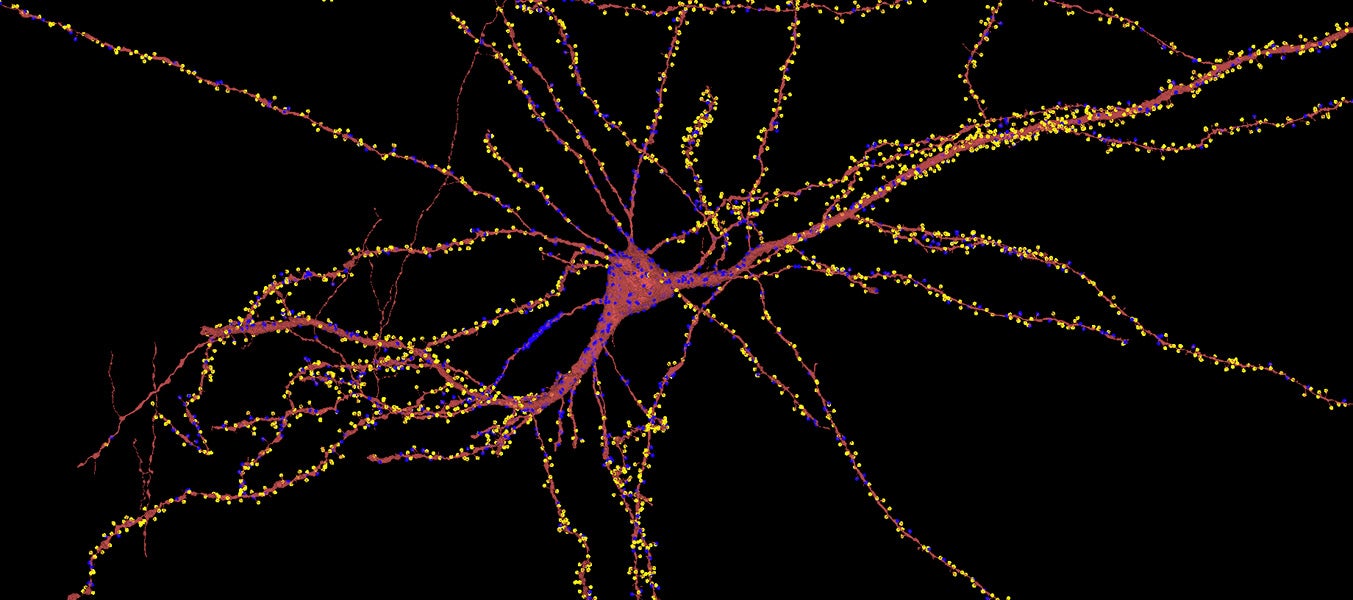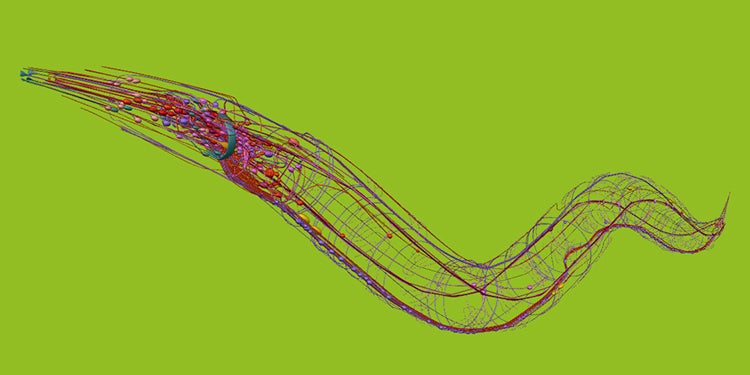Neuroscience aspires to understand the intangible properties of the mind. The ability to think, write poetry, fall in love and even envision a higher spiritual realm are all generated in the brain. How the wrinkled mass of the brain gives rise to these impalpable experiences is a mystery.
A better map of the brain's circuitry is thought to be the key to cracking that mystery. Scientists completed a wiring diagram that traced all the connections of the 302 neurons of the roundworm. They were traced by hand on printed sheets of electron microscope images, a task that took years to complete. The project marked the first-ever complete connectome, a comprehensive map of the neuronal connections in an animal's nervous system.
It can take less than a month to map a roundworm's connectome thanks to advances in computing and image analysis. Scientists can look at larger animals thanks to these technological improvements. There are more than 9,000 cells and 100,000 neurons in the fruit fly's connectome.
They hope to map the brain of a developing fish and a mouse within the next decade, which is nearly a thousand times more ambitious than any done so far. When the worm connectome was first mapped, they began to map small pieces of the human brain.
Several recent studies suggest that maps alone can't tell us much about the function of the brain in smaller animals. The fruit fly brain that helps the flies navigate during flight was examined in a study published in October 2021. Scientists mapped the connectome of this region and found new types of neurons that could be used to perform computations. A study published in September 2021, combined data from the roundworm connectome with techniques for visualization of neural activity to show how specific neurons contribute to specific aspects of the worm's mating behavior.
Jeff Lichtman is at the forefront of connectome research. His lab is working to map the neural circuitry of different animals, including worms, flies, fish, mice and humans, and he has developed several methods now used by other researchers in the field. He was a codeveloper of Brainbow, a genetic technique that can label individual neurons in hundreds of different colors, producing spectacular images of the brain. He has developed tools to analyze brain slices with high-resolution electron microscopes. A report of a complete wiring diagram of a pinhead-sized piece of the human brain was posted by Lichtman and his colleagues at Harvard and Google.
In the Annual Review of Neuroscience, Lichtman wrote an overview of the challenges of getting useful information from vast amounts of connectomics data. The conversation has been edited for clarity.
Neural maps are needed to understand the brain.
There are a lot of different answers to why we need them. The brain is different from the other organs in that it is able to communicate over large distances. The axon of a neuron can be sent a long distance. In mammals, these distances can be over a millimeter. In the case of a giraffe, some of the neurons are long. If you can trace where the axon is going and who it is talking to, you can understand the function of that cell. It's fundamental to map those connections. It's not relevant for studying any other organ system in the body.

How does connectomics differ from neuroscience?
If you need to know more about the brain, connectomics is a great tool to use. The data revealed something that didn't fit the landscape at the time and forced people to think in new ways. The data give you things that you wouldn't have thought of.
Scientific American newsletters are free to sign up for.
Do you think we need new ideas about the brain?
Most of our ideas about the brain are wrong. They are wrong because we don't have a lot of data and mapping will give us a better idea of what the brain really is. The biological processes it is trying to explain are more important than most human thought. The thoughts that come out of the human brain are not as complex as the machine that makes them.
How will our thoughts be able to understand the brain if that is true?
Isn't it ironic? That this machine is not as complicated as it seems. Humans have done a great job of describing the behavior of light. It is one of the most successful theories humans have ever come up with, but no thinking person would ever come up with it unless forced to by reality. The idea that a photon can act as a particle or wave is crazy. Understanding the human brain is not easy.
Our brain is doing a lot of things at the same time. This is not a problem for the brain. It is a problem for our conscious thought process, which only attends to one thing at a time.
neuroscientists who study connectomics feel like explorers because they are going into a terrain that feels alien. The best we can do is be like the early naturalists who cataloged plant and animal species that hadn't been seen before. I don't think we will be able to explain it or command it in the near term. I think we will be able to describe it. Maybe we can understand what is going on from those descriptions.

You are involved in two large-scale efforts to map the mouse and human brain. Can you tell us more about the challenges?
Well, connectomics is a process. After 10 or 20 steps, you have a wiring diagram. First, you have to preserve the tissue, then you have to stain it, cut it, and take pictures of it. You have to align those images. You have to make sure that you have used artificial intelligence in a correct way. You have to map out the connections after you have done all that. If you have 20 steps that each have a 90 percent chance of succeeding, you will succeed only 1 in 8 times. It is difficult to get all the way to the end.
Critics argue that a connectome alone can reveal how the brain works, and some point to the fact that scientists have had the worm connectome for four decades and still don't fully understand how the nervous system works. What would you say?
That work is really an unfair description. Most people who study worms pay a lot of attention to that data set. A team of worm experts and I recently published another paper on the worm connectome. It was significant. There is a lot of information there that you can't wrap into a single paper, but there are a lot of new ideas that came out of comparing the connectomes from one age to another.
Young stage worms have a wiring diagram that has feedback in it. The animal is thinking a lot before acting. If their teacher asks them how much is 5 times 12 they are going to have to memorize the multiplication table. If they feel confident in their answer, they will raise their arm in the air and move their arms back and forth to get the teacher's attention. A baby worm is the same thing. You see a lot of checking, but as the animal gets older, the feedback becomes more important. I know what I have to do, and I just do it.
Do you think studying smaller animals can lead to better understanding of the human brain?
Most people study these smaller animals in hopes that they will apply to how the human brain works. I think we are different from other animals. By the end of our growing up, we are masters of knowledge that we have gained through experience.
I'm not sure if the closest relatives we have are a good model for us because they don't have the same dependence on learning that we do. I believe that the behavior of our closest primate relatives has not changed over time, whereas I do things my grandparents could not and my own children do things I can't.
I hope that we will discover the mysteries of how experiences are incorporated into the wiring diagram of a human brain.
Do you think connectomics will be relevant in the future?
There are diseases that are related to connections. These connectopathies may be miswiring at the level of the synapses. The brain doesn't make the right number of connections between excitatory and inhibitory cells. The brain can't be seen with traditional techniques, so it's not clear what's wrong with it. Maybe when we have a better way of looking at the fine structure of the connection, we will see what is wrong.
The article was originally published in Knowable Magazine. You can sign up for the newsletter.